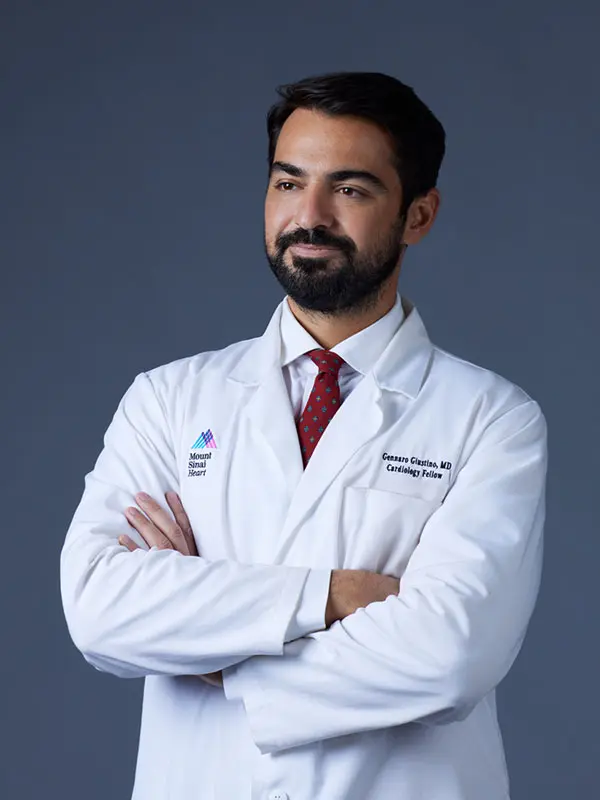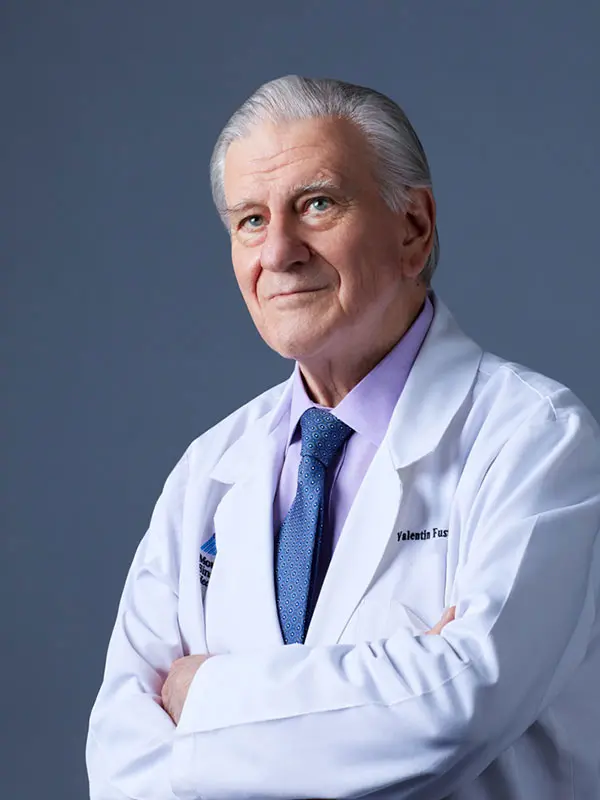COVID-19 can inflict significant cardiovascular damage, leading to higher risk of death among hospitalized patients, a series of studies by Mount Sinai published in the Journal of the American College of Cardiology (JACC) has found. Drawing on data from five hospitals within the Mount Sinai Health System at the height of the pandemic, the researchers learned that myocardial injury is common among patients with COVID-19, and that more significant injuries may be associated with a greater than threefold risk of mortality.
One of the studies, published in JACC in August 2020, assessed heart injury in hospitalized COVID-19 patients through the lens of troponin concentrations. In the observational study, investigators examined the electronic health records of nearly 3,000 confirmed COVID-19 patients admitted to Mount Sinai hospitals from February 27 to April 12, 2020. The results of blood tests taken within 24 hours of admission showed that 36 percent had elevated levels of troponin, an indication of myocardial damage.
The study found that even small amounts of myocardial injury—where serum cardiac troponin was in the 0.03 to 0.09 ng/ml range—were associated with a higher risk of mortality, a hazard ratio (HR) of 1.75. Higher levels of troponin, above 0.09 ng/ml, were associated with an even more pronounced risk for death, with an HR of 3.03. In addition, patients with a history of cardiovascular disease hospitalized with COVID-19 were more likely to have myocardial injury, compared to those without coronary problems.
“There has been a lot of speculation about how COVID-19 affects the heart and blood vessels, and with what frequency,” says lead author Anuradha Lala, MD, Assistant Professor of Medicine (Cardiology) at the Icahn School of Medicine at Mount Sinai. “These findings, which are consistent with reports from China and Europe, are important for clinicians. If COVID-19-positive patients arrive in the emergency room, and their initial test results show troponin levels are elevated, doctors may be able to better triage these patients and watch over them more closely.”
The mechanisms that underlie these findings are a subject for further study, says senior author Valentin Fuster, MD, PhD, Director of Mount Sinai Heart and Physician-in-Chief of The Mount Sinai Hospital. “Myocardial injury is frequent in COVID-19 patients, but the question is, what is the main etiology? Is this by direct effect of the virus into the myocardium, or is it an indirect effect of the cytokine storm also into the myocardium, or a procoagulant causing coronary thrombotic ischemia?” Dr. Fuster says. “These are questions that need to be addressed in the future.”

Central Illustration: The prevalence, potential mechanisms, and impact of myocardial injury in COVID-19.
Another of the studies, published in JACC in November 2020, sought to characterize the echocardiographic abnormalities associated with myocardial injury and their impact in patients with COVID-19. It examined 305 hospitalized patients with confirmed COVID-19 who had undergone transthoracic echocardiographic (TTE) and electrocardiographic evaluation during their hospitalization. Myocardial injury was observed in 190 patients (62.3 percent). Compared with patients without myocardial injury, those with myocardial injury had more electrocardiographic abnormalities, and an increased prevalence of major echocardiographic abnormalities, including left ventricular wall motion abnormalities, global left ventricular dysfunction, left ventricular diastolic dysfunction, right ventricular dysfunction, and pericardial effusions.
The rate of in-hospital mortality was significantly higher for patients with both myocardial injury and TTE abnormalities, 31.7 percent, compared with 5.2 percent for patients without TTE abnormalities and myocardial damage.
“We found that among COVID-19 patients undergoing transthoracic echocardiography, cardiac structural abnormalities were diverse and present in nearly two-thirds,” says Gennaro Giustino, MD, Cardiology Fellow at The Mount Sinai Hospital, and corresponding author of the study. “Because of the importance of early detection, we believe an echocardiogram can be a critical tool for identifying these abnormalities in high-risk patients who could benefit from a more aggressive therapeutic approach.”
The diagnosis of myocardial injury in patients with COVID-19 should also consider Takotsubo cardiomyopathy (TTC), according to a third Mount Sinai study, published in JACC in August 2020. TTC, which is characterized by acute and transient regional left ventricular systolic dysfunction typically triggered by emotional distress, is most often seen in women. But it is also associated with respiratory failure and infections, and in their study of 118 patients with confirmed COVID-19—all men—Mount Sinai researchers found that five (4.2 percent) showed features compatible with TTC in clinically indicated transthoracic echocardiograpy.
“Echocardiography can help to better understand the mechanism of myocardial injury,” says Dr. Giustino, lead author of the TTC study, “and that knowledge can guide us to the most appropriate diagnosis and treatment for each heart patient with COVID-19.”
Featured

Anuradha Lala, MD
Assistant Professor of Medicine (Cardiology), Icahn School of Medicine at Mount Sinai

Gennaro Giustino, MD
Cardiology Fellow, The Mount Sinai Hospital

Valentin Fuster, MD, PhD
Director of Mount Sinai Heart and Physician-in-Chief of The Mount Sinai Hospital